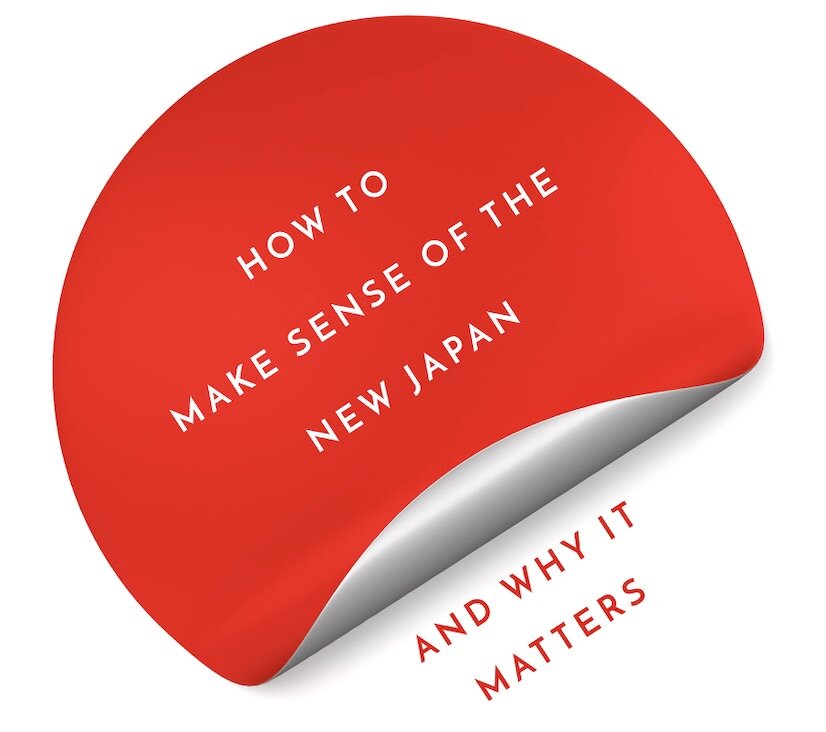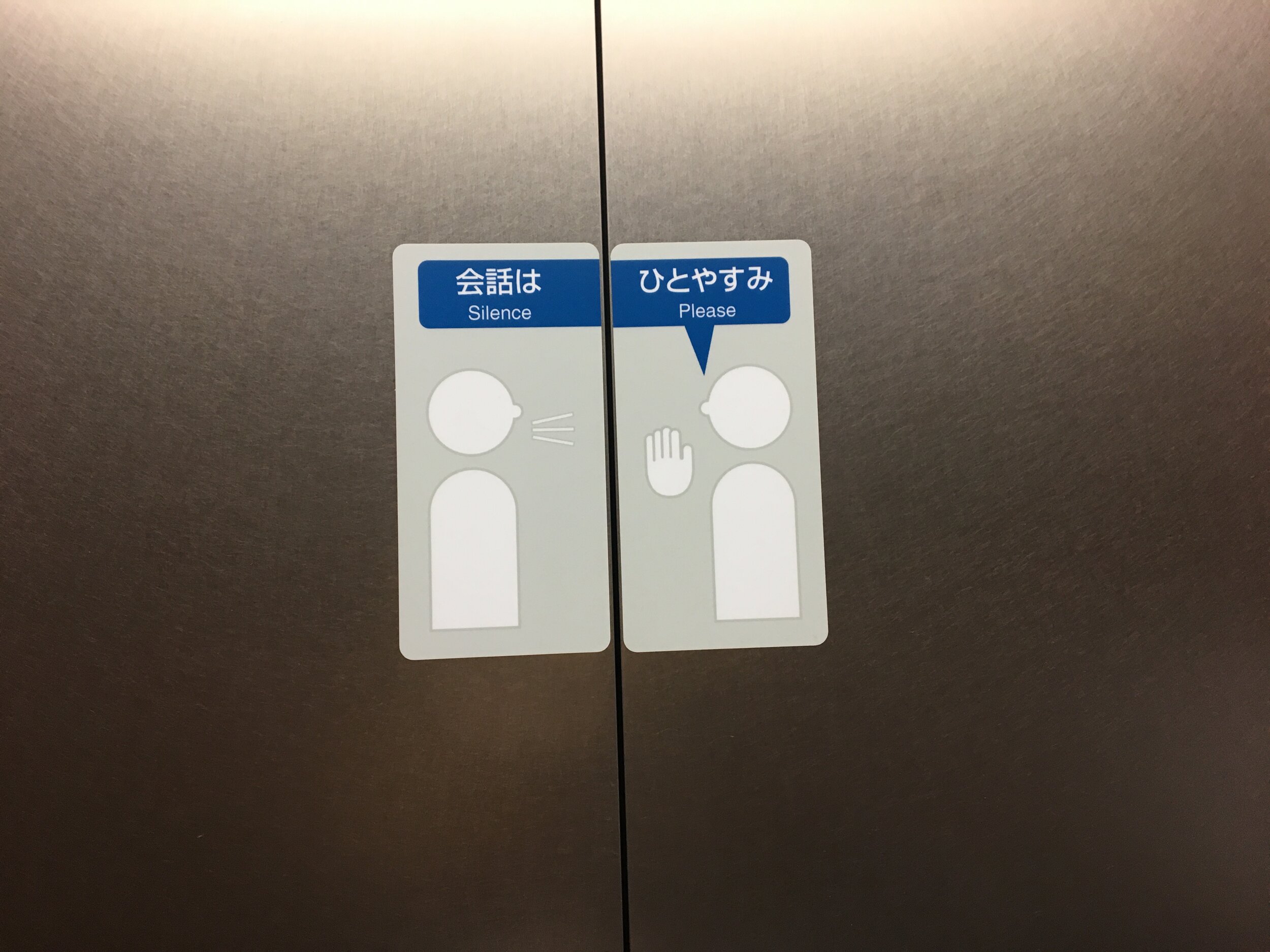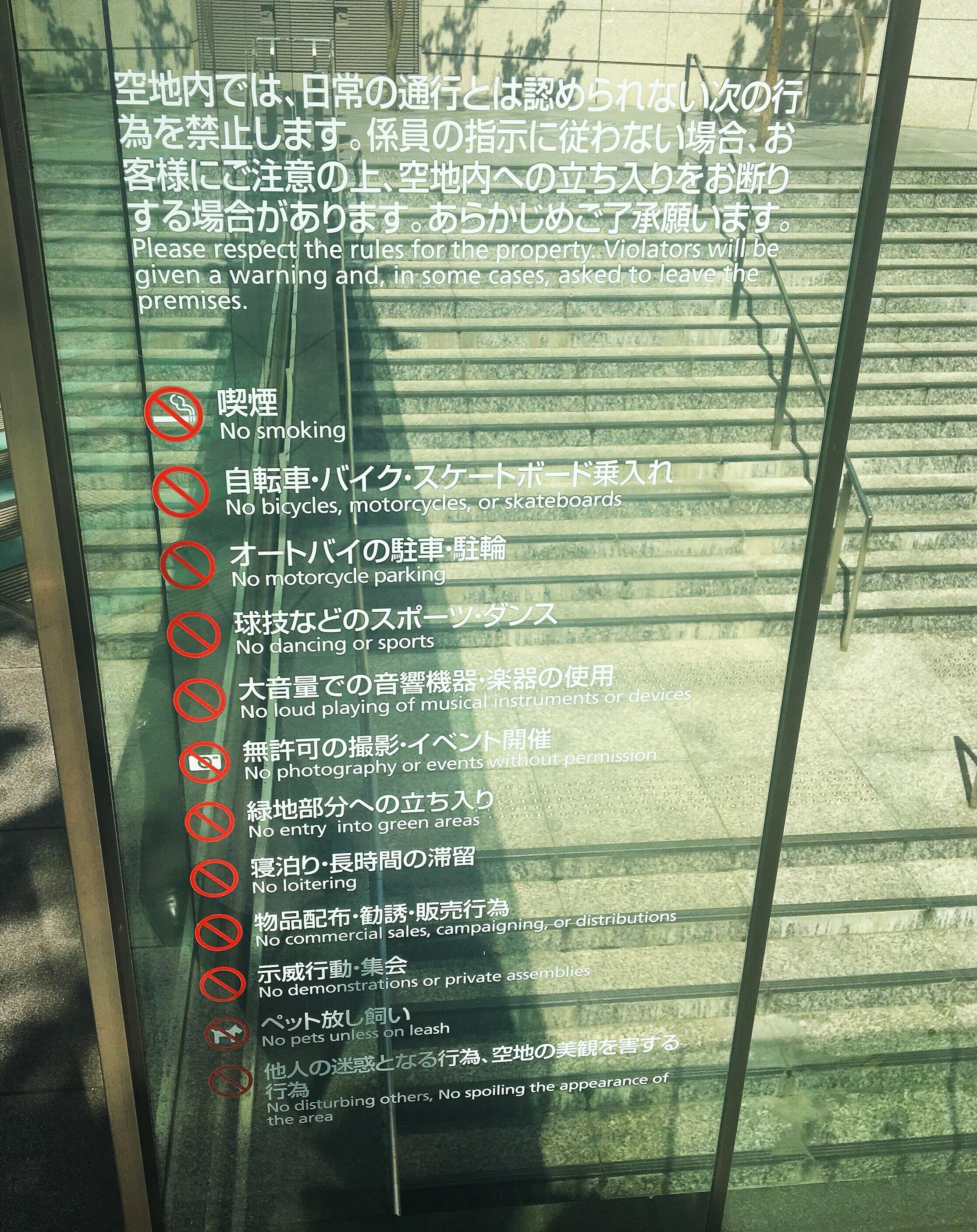COVID-19: Why Japan’s Fatality Rate is So Low
The Great 自粛 | The Effectiveness of Self-Restraint in a Tight-Culture Setting
On Monday, May 24th 2020, Tokyo opened back up, allowing 100% of Japanese GDP to resume work, including at the office. How exactly this is rolled out reflects Japan’s behavior throughout this entire pandemic: careful, measured, and with a dose of extra caution on top of what the government is asking of its people. Companies are accommodating telework shifts, organizing half of employees to keep working from home in intervals. And naturally, masks and jishuku (“self-restraint”) remain the overarching prescription: be careful, be observant, don’t put yourself before the interests of society overall.
Japan seems to have conquered the first wave of COVID-19 with flying colors: the total count, as of June 1, stood at 16,698 known cases and 900 deceased. Some have challenged the accuracy of these counts, but even if they were off by a factor of 10, they would still rank among the lowest. As early as in January, there had been widespread concerns that the world’s fastest-ageing and – at least in Tokyo - most densely populated society would be particularly hard hit. But the opposite is the case: no other industrialized, large, urbanized country has fared better. Why and how?
Source: Nikkei.com
The chart graphs total cases, divided into current (red), recovered (blue), and deceased (yellow). Following a huge increase in April, a nationwide lockdown extending into May and continued in reduced version since has meant a sharp decline in new and current cases and a stabilization in the total count.
While Japan long went completely unnoticed by the media – which seemed to be more enamored by tiny Sweden – some now refer to the situation in Tokyo as the “Japanese Miracle”. Many different reasons are offered for why Japan could fare so well. Somebody in Japan compiled a list of 43 factors contributing to Japan’s faring so much better than the rest of the world. Below I will group these into four sets of explanations, and then show how all these worked because of an underlying reason: Japan’s tight culture. The “self-restraint” – without outright prohibitions or punishment – and other policy measures were so effective because of Japan’s tight culture – a set of behavioral norms that have long been honed and are designed to increase the chances of survival in times of crisis. Originally, these were built as response mechanisms to major earthquakes, tsunami and typhoons, of which Japan has more than 1,500 every year. By baking certain rules of public behavior into society, when the pandemic struck people adopted these behaviors as second nature and switched to “self-restraint”. Not everybody obeyed at all times, of course, but enough did for long enough, to contribute to a huge difference in outcomes.
(1) Japan’s COVID-19 Response: Early insights from the Princess Diamond cruise ship data
The first group of explanations centers around the early advantage, presented in the form of the Yokohama cruise ship debacle, which in the end turned out to be, quite literally, a life saver. It provided important insights and made the virus a local challenge – as opposed to somebody else’s problem – right away.
This ship had boarded an infected passenger on January 20th, 2020, on route to Hong Kong, and by the time it arrived in Japanese waters on February 4th, several passengers and crew members had fallen ill. There were many errors in handling the situation, accompanied by a lot of negative media coverage. But, at the end of the story, not only did this ship give Japan an early public health shock, but it also provided the country was a very important set of data – and the best large-population statistics since. All of the 3,711 passengers and crew members, including passengers who got off the ship earlier, were tested. This is a large enough sample to withstand any scientific scrutiny.
When the ship left the Yokohama quarantine six weeks later, on March 26, of the 3,711 people on the ship, 712 had tested positive for the virus and 10 had died. This translates into an infection rate of 20% of the entire ship population, and a case fatality rate of 0.3% (roughly similar to other viral respiratory infections). It also stands to note that most of the ship’s passengers were elderly – with a median age of 69 -- so these data may indicate the upper boundary of the infection. With one exception, all deceased were far older than 70. Also important was that of the people who tested positive, about half had no symptoms at all.
Armed with these early insights into transmission and virulence, as well as age profiles, Japan immediately closed down all nursery homes, and began to systemically shield its elderly population (many of whom live alone) from contact. Moreover, the government also launched a “cluster buster” strategy, by tracing in painstaking detail the contacts and environs of infected people. A first cluster was around a Tokyo cab driver in late January, and a second developed in Hokkaido – and in a remarkable feat, the entire island was effectively closed down. This type of “tracing and shielding” is a long-standing Japanese approach to disease. As of January 2020, Japan already had more than 50,000 nurses trained in tracing all over the country.
(2) COVID-19 in Japan: Early government action
The second reason for Japan’s success in containing a wider spread of the pandemic was that the government – chastised as it was for these measures at the time – acted early. The Emperor’s 60th Birthday party on February 24th was cancelled. This may not sound like much to the Western reader, but its impact can hardly be exaggerated: 60 is an important age, and this was the new Emperor! Yet, the gates to the Imperial Palace remained closed. The government also asked that all activities involving more than 35 people be cancelled. I was personally involved in a gut-wrenching decision to cancel a large book-publication event scheduled for February 24th at a leading university in Tokyo that involved more than 300 people. There was no law, no penalty, no sanction – but the School’s leadership was unwilling to host the event, as they did not want to take the responsibility. No one wanted to be the one to start the pandemic. Eventually, the event was live-streamed and arguably reached even more people for it.
On February 27, Japan was one of the first countries in the world to shut down all schools. This caused a huge brouhaha and triggered another round of criticism, but in the end was copied globally as a necessary measure. With each of these measures, people were reminded to increase their “self-restraint” and please stay home as much as they could. Streets and restaurants were still open, and people went out, but the volume was reduced by roughly half as more and more companies switched to telework.
In March, the Government launched the “3 C” campaign (the 3密), which was effectively an “avoidance campaign” that asked people to avoid Closed Spaces, Close Contacts, and Crowds. Again, there were no rules or laws, just a call for people to be careful. This worked to some degree, and cases remained limited. And then came a double whammy, caused the returning youngsters from “study abroad” programs (including students getting ready for the new school year starting on April 1), and a long holiday weekend with nice weather and cherry blossoms. The following week, cases picked up, as the above chart showed.
These two direct causes of the late March spike also meant that most of the infected people were younger: students and weekend shoppers. Nikkei data show that most cases were people in their 20s, 30s, 40, and 50s. The majority of deceased was 80 years and older. The age distribution of infections may be another reason for the lower fatality rates.
The huge increase beginning in late March – as clearly shown in the figure above – caused the government to adopt more stringent actions. On March 28, the top metropolitan areas of Kanto, Kansai and Fukuoka were asked to switch to “severe self-restraint”, and stay at home. In the first week of April, Tokyo downtown traffic was reduced to 20%. This put 50% of Japanese GDP on hold. Over the Golden Week vacation, for a period of about 2 weeks, all of Japan was asked to stay home. However, it stands to note that there was no law to enforce this, people who were out were kindly asked to try harder in their practice of jishuku, self-restraint, but no fines were levied, or penalties dished out. And, even though people were unhappy and divided over the government’s leadership, there were no demonstrations, no unrest, and no major violations
(3) Japan’s Setting: Health, hygiene and the BCG vaccine in Japan
The third group of reasons touted for Japan’s COVID-19 track record is the overall excellent health condition of the country’s population and the deep concern and adherence that citizens, on average, exhibit for hygiene, regular doctor’s visits, preventative medicine and inoculations. One, in particular, is hotly debated: the BCG vaccine, a tuberculosis vaccination that is required in many parts of Asia but not in the U.S. or Europe. This is a live vaccine, and it appears as if the “Japan strain” is particularly potent. While the connection to the BCG vaccine has not been proven by scientists, a correlation may indeed exist in helping reduce the fatality rate.
Other patterns of hygiene may also have proven helpful, including wearing masks. Japan was perhaps a bit lucky there, because the onset of the pandemic coincided with the onset of the allergy season, and about a third of people were wearing masks in February and March with specific allergy-symptoms reducing inlays, effectively shielding themselves and their surroundings from contagion.
(4) Japan’s Personal COVID Scare: Ken Shimura’s Death
A fourth factor in Japan’s story was the death, on March 29, 2020, of Ken Shimura, a Japanese comedian sometimes referred to as “Japan’s Robin Williams”. A household face and name, Mr. Shimura was barely 70 years old and had been in good health when he passed away, sending a shockwave through the entire nation: now everybody “knew” somebody who died from COVID-19. This gave the nations the heebie-jeebies, and was said to make people even more careful and risk averse. They began to stay home. Even the more risk-taking parts of society – including what Japan calls the “water trade”, i.e., the red lantern districts and nightlife places, closed down.
The Underlying Link: COVID-19 and Japan’s Tight Culture
All this begs one question: Why was the self-restraint / jishuku approach so effective? There was none of the resistance seen in other democracies, even though Japan’s laws were much less stringent (or powerful) in enforcing the stay-home orders. Legally, the jishuku was not an ordinance, just a “very strong advisory”, framed mainly in the advice of “3C avoidance”. And yet, a large enough number of people obeyed, and the first phase could be contained.
The explanation lies in Japan’s “tight culture”. This concept ties into Michele Gelfand’s framework of “tight-loose theory”, which posits that there is a persistent and significant difference across countries in how strictly social norms of behavior are adhered to, and how tolerant people are toward deviants (i.e., how intensely they feel about violations). A main enforcement mechanism of tight cultures is shaming and social sanctioning, such as excluding violators from an agreed set of behaviors from groups, neighborhoods, etc..
Behavioral norms are not innate but socially created, and they are very pragmatic – they are widely agreed upon and adhered to because they serve an important purpose. This is why nations that have a long history or continuing experience of exogenous shocks – be that famines, droughts, wars or earthquakes – tend to have crafted a set of norms that ensure societal stability and survival at a time of crisis. Japan, with its frequent earthquakes, ranks very high on the tight-loose spectrum, together with Norway, South Korea and India. Note that the content of the norms – the prescription of what constitutes the “right” behavior in a certain situation – can differ greatly, such as between India and Japan. But the agreement on the relevance of these norms, and the limited acceptance of deviant behavior make both countries “tight”.
Tight Culture: Japan’s behavorial norms during crisis
In Japan’s case, many of these norms were originally geared to help society regroup and reorganize after earthquakes - of which Japan has 1,500 per year, several of which major. This is why kindergarteners learn how to line up straight, don’t stand out, don’t make a lot of fuss about themselves, and behave so as not to cause an inconvenience to others. When things are uncertain, avoid getting yourself in a risky situation. When in a public space, go with the flow. Be polite, considerate and aware of the situation you are in. Be quiet. Look out where you are in relation to others. Allow others space as much as possible. When you have to pass them by or step in front of them, ask and make yourself as small as possible. Don’t block somebody’s route. And above allow, follow the rules. And, people do. During a pandemic, what you get is empty subways even without a strict lockdown prescription from the government.
This is reinforced all the way through the school system, including through the well-known ijime – school bullying. Constant rules, and sanctioning of rule violations, introduces a lot of constraints into society. It puts emphasis on process and right behavior, and may slow down any initiative of change (as I argue in my book, it is the reason why Japan’s business reinvention took one generation).
But the benefits of having and constantly reinforcing a tight set of behavioral prescriptions are also significant. This had already been on display during the 9.0 Earthquake of March 2011, which caused no chaos, looting, or even social distress. Everybody stood in line patiently, walked in lockstep quietly, and cleaned up diligently. And even though Japan’s social norms were built to overcome earthquakes, they performed just as well when the COVID-19 virus arrived. The government asked people to display self-restraint and stay at home, and most of them did.
This underlying “tight culture” setting explains the efficacy of the various COVID-19 measures, from the reactions to the cruise ship dilemmas and the “cluster buster” tracing approach, to the quiet compliance and perseverance of metro dwellers. This attitude and mindset is the background before which people in the large cities figured out ways to accommodate the strains of a sudden switch to telework, the hassles of lack of childcare and other services, and the necessities of staying home in small apartments – for the sake of the society and in the public interest. It is a tradeoff that reflects people’s preferences for societal cohesion and stability and that people have made before, and will do again should there be a second wave. It comes with its own high costs and significant constraints, yet the benefits are also enormous.
“Tight culture”-lining up to wait for the subway while alone in the station






